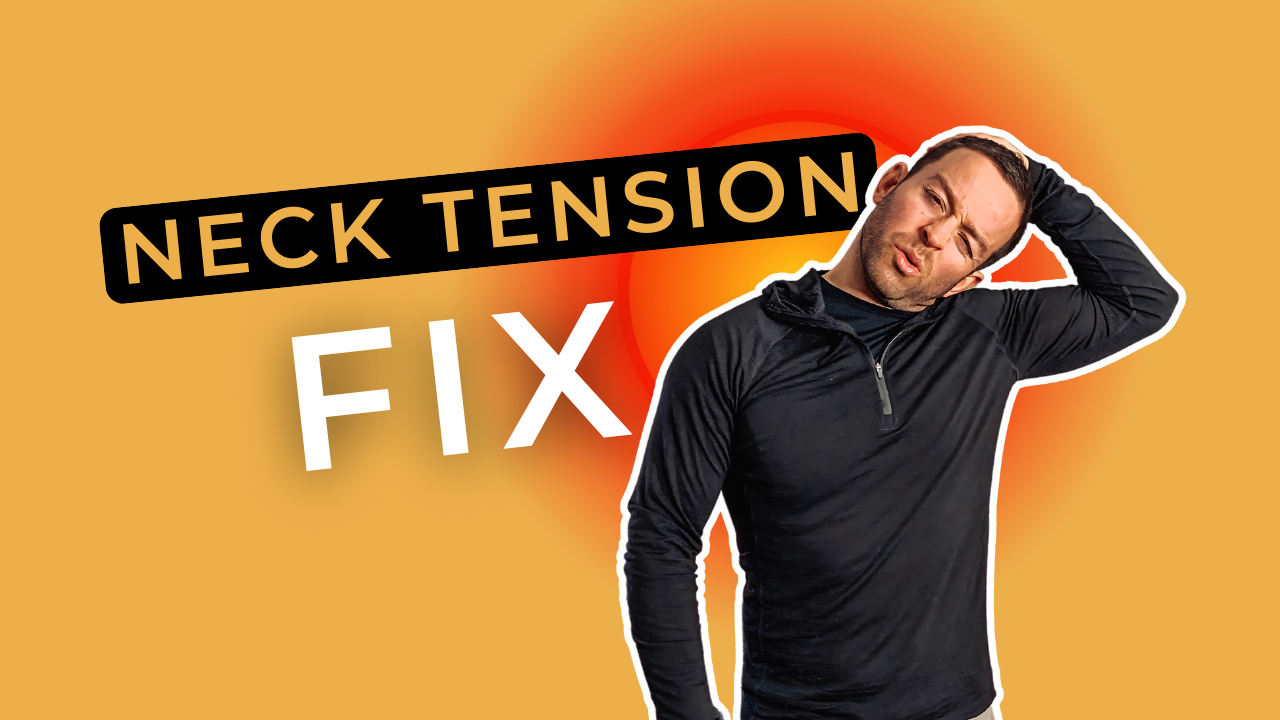3 Simple Exercises to Relieve Neck Tension

How to Relieve Neck Tension with Simple Exercises
Struggling with neck tension and looking for relief beyond traditional stretches? You're not alone. Many people find that typical neck stretching provides only temporary relief without addressing the underlying issue. However, with a different approach focusing on precise movements and applied neurology, lasting relief can be achieved. Let's explore some high-percentage exercises designed to alleviate neck tension effectively.
How to Perform a Nod & Slide for Neck Tension:
Begin by standing or sitting in a tall position, lengthening up through the crown of your head. Flex your head and neck forward as far as you can, then tuck your chin to create a double chin. Maintain this position as you slide your head backward at an upward angle, returning to your starting position. This movement should produce a gentle stretch at the base of your skull and help mobilize the cervical spine without involving the lower or mid-back.
How to Isolate Neck Movement During Exercises:
It's crucial to ensure that only your neck is moving during the nod and slide exercise. Often, people inadvertently involve their lower back in the movement, which can counteract the exercise's effectiveness. Imagine being in a bucket of cement up to your neck, restricting movement below the shoulder level to keep the focus on your neck.
How to Correctly Position Your Jaw and Tongue:
Avoid clenching your jaw or tensing your facial muscles during neck exercises. Keep your tongue against the roof of your mouth, with the entire surface slightly elevated, and your teeth slightly apart. This positioning helps ensure the exercise targets the intended areas without unnecessary tension.
How to Mobilize the Accessory Nerve for Neck Function:
Start by relaxing your arm by your side and drawing your shoulder down and back. Lengthen up through your head, slide your head and neck forward into a 'chicken neck' posture, and tilt your head away from the targeted side. You should feel a radiating stretch. To drive the mobilization, gently pulse your shoulder up and down, maintaining the initial tensioning sequence. This exercise targets the accessory nerve, crucial for upper trapezius and SCM muscle function.
How to Use Eye Exercises to Relieve Neck Tension:
Surprisingly, exercising your eye muscles can also help alleviate neck tension due to the neuroanatomical connections between the eyes and the neck. While seated or standing with good posture, use your finger or a pen as a visual target. Move the target towards and away from your nose, ensuring your eyes converge and diverge smoothly. Adjust the speed and range of motion to prevent unwanted strain or double vision.
By incorporating these exercises into your routine, you can achieve more lasting relief from neck tension. Remember, consistency is key, and it's essential to perform these exercises gently and with precision.
If you're interested in exploring more about applied neurology and movement, listen to our podcast episodes where we offer a 3 Part Series on The Neural Hierarchy to break down the role the visual system, the vestibular system, and the proprioceptive system plays in modulating pain and performance.

👋🏻 Hi, I’m Taylor Kruse, a strength & mobility coach who’s passionate about jiu jitsu and neuroscience. I help you with daily exercise and recovery tips so that you can squash your pains and make those gains!
Whenever you're ready here's how we can help you:
- Join our neuro community for health & movement pros to begin practicing the fundamentals of applied neurology in our Dojo Membership
- Master applied neurology so you can feel confident you can help anyone who walks through your door by joining our live course, The Neuro Dojo
ARE YOU A MOVEMENT PROFESSIONAL WHO CARES DEEPLY ABOUT YOUR CLIENT'S RESULTS
Learn how to achieve lasting change using applied neurology
Begin practicing the fundamental of applied neurology so you can become an expert in problem solving movement and pain issues.

